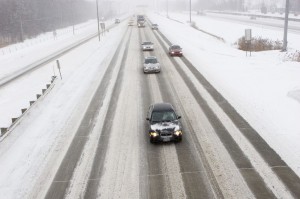 Icy roads are dangerous for even the most experienced driver and in any type of vehicle. While the right vehicle can make driving on snow and ice safer, it can also give drivers a false sense of security, causing them to drive more carelessly. Driving in a storm has the added danger of poor visibility and unpredictable conditions, but on a sunny day black ice can sneak up on you causing a wreck on a road that appears to be ice-free.
Icy roads are dangerous for even the most experienced driver and in any type of vehicle. While the right vehicle can make driving on snow and ice safer, it can also give drivers a false sense of security, causing them to drive more carelessly. Driving in a storm has the added danger of poor visibility and unpredictable conditions, but on a sunny day black ice can sneak up on you causing a wreck on a road that appears to be ice-free.
Basic Safety Tips for Driving on Icy Roads
- Unless you absolutely have to go somewhere, stay off the road until the conditions improve.
- Slow down. Even if everything feels fine, stay below 45MPH on ice. In many areas you will need to go even slower.
- Leave extra room between you and the vehicle in front of you.
- Go easy on the brakes. Braking will cause you to slide. Slow down by letting off the gas, and use the brakes as little as possible.
- Do not use cruise control.
- Drive the appropriate vehicle with good snow tires. You may even need tire chains.
- Do not try to drive on the ice when you are fatigued.
Black Ice
Black ice is very dangerous because it looks like dry pavement. Anytime the temperature is below freezing there can be ice on the road, even if you don’t see it and the weather is sunny and clear. Black ice is most likely to be present when snow and ice have had the chance to melt and refreeze.















